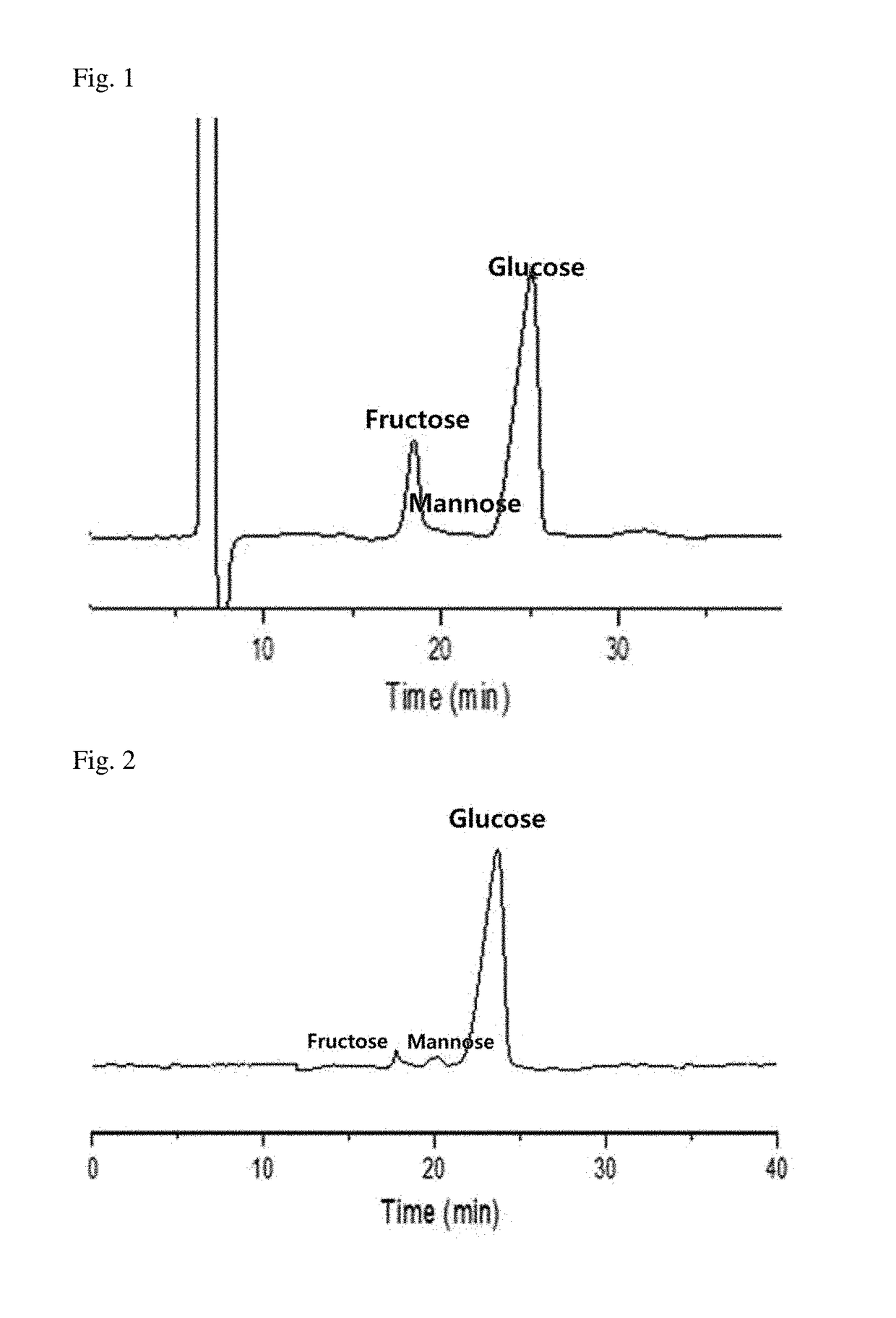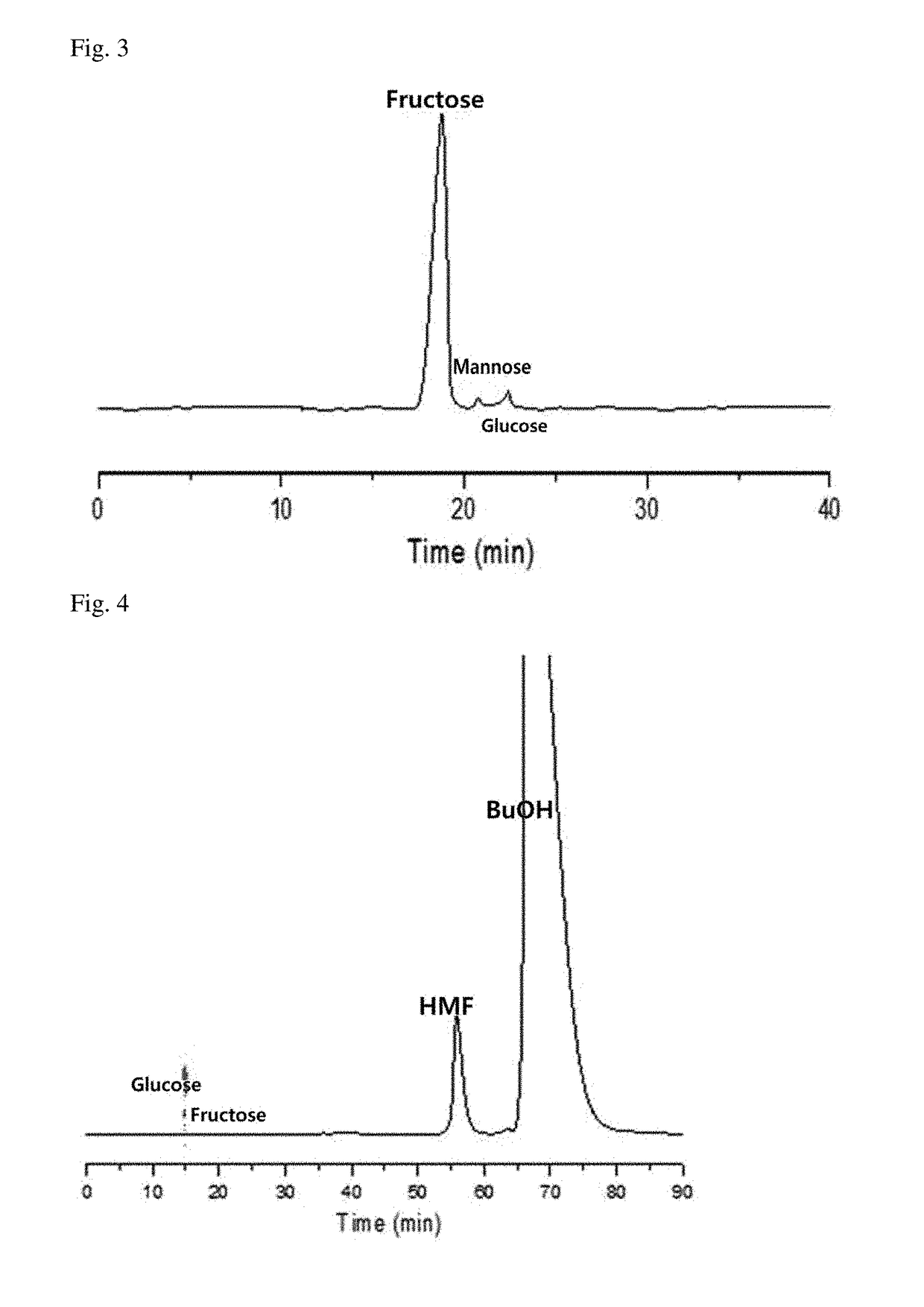Method for preparing fructose or xylulose from biomass containing glucose or xylose using butanol, and method for separating the same
a technology of xylulose and biomass, which is applied in the direction of catalyst activation/preparation, physical/chemical process catalysts, sugar derivates, etc., can solve the problems of insufficient use of these enzymes, insufficient production yield at the level of an enzyme process, and the use of chromatography methods which require expensive equipments, etc., to achieve high glucose conversion rate, large difference in solubility, and high fructose selectivity
- Summary
- Abstract
- Description
- Claims
- Application Information
AI Technical Summary
Benefits of technology
Problems solved by technology
Method used
Image
Examples
preparation example 1
alcite Catalyst
[0052]A hydrotalcite having an Mg / Al molar ratio of 1.0 to 5.0 was prepared using precursors, Mg(NO3)2·6H2O (Sigma-Aldrich, 99%) and Al(NO3)3·9H2O (Sigma-Aldrich, 99%). Specifically, Mg(NO3)2·6H2O (12.88 g, 0.05 mol) and Al(NO3)3·9H2O (9.37 g, 0.025 mol) were dissolved in deionized water (200 mL). An aqueous solution (100 mL) of NaHCO3 (Sigma-Aldrich, 99%, 4.20 g, 0.05 mol) was added dropwise to the obtained mixture solution, and then gradually precipitated. During the co-precipitation, the pH of the mixture solution was maintained at 10.0 by adding an aqueous solution of 2.0 M NaOH (Sigma-Aldrich, 99%). After the precipitation, the precipitate formed was aged at 100° C. for 24 hours. The aged mixture was filtered, and then washed several times with deionized water until the pH of the filtrate became neutral. The filtered solid was dried overnight at 120° C. using an oven, and then calcined in an air current at 450° C. for 10 hours. The calcined sample was poured into...
example 1
ration of Fructose from Glucose According to Reaction Temperature
[0053]After glucose (1.0 g) was mixed with 1-butanol (10 g) and a hydrotalcite (0.5 g, Mg / Al═2.0), the resultant was heated to 95° C., and then reacted for 5 hours, thereby preparing fructose. After completion of the reaction, the hydrotalcite was separated from the reaction mixture solution by filtration. The obtained reaction mixture solution was then analyzed using a liquid chromatography, and the result is shown in FIG. 1. Herein, the glucose conversion rate was 22%; the fructose yield was 20%; and the fructose selectivity was 91%.
example 2
ration of Fructose from Glucose According to Reaction Temperature
[0054]Fructose was prepared in the same manner as in Example 1, except that the reaction temperature was raised to 103° C. instead of 95° C. Herein, the glucose conversion rate was 35%; the fructose yield was 31%; and the fructose selectivity was 89%.
PUM
| Property | Measurement | Unit |
|---|---|---|
| molar ratio | aaaaa | aaaaa |
| molar ratio | aaaaa | aaaaa |
| wt % | aaaaa | aaaaa |
Abstract
Description
Claims
Application Information
 Login to View More
Login to View More - R&D
- Intellectual Property
- Life Sciences
- Materials
- Tech Scout
- Unparalleled Data Quality
- Higher Quality Content
- 60% Fewer Hallucinations
Browse by: Latest US Patents, China's latest patents, Technical Efficacy Thesaurus, Application Domain, Technology Topic, Popular Technical Reports.
© 2025 PatSnap. All rights reserved.Legal|Privacy policy|Modern Slavery Act Transparency Statement|Sitemap|About US| Contact US: help@patsnap.com


